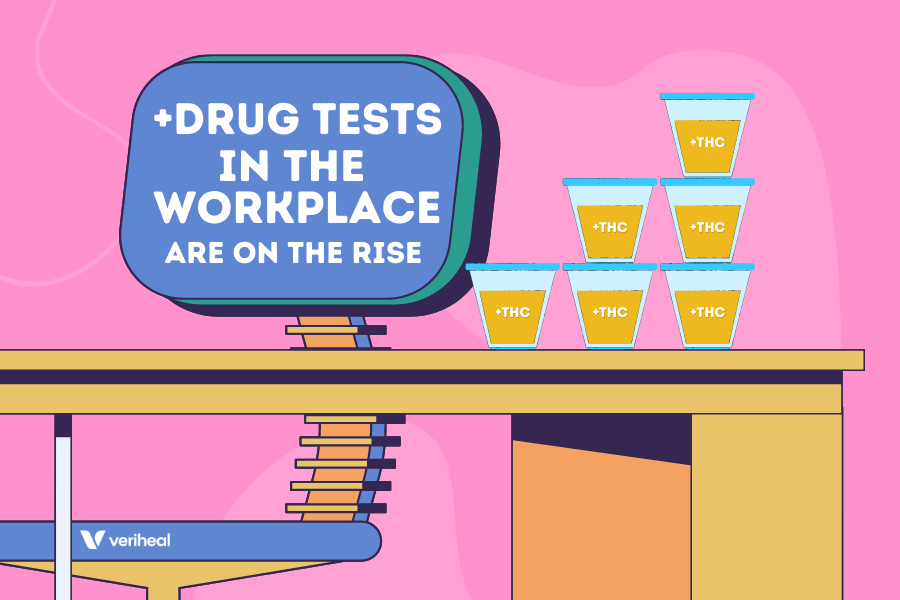As many states across the U.S. are increasingly relaxing their cannabis laws, it’s no surprise that the drug’s consumption has grown, especially among American workers. Currently, 23 states have legalized the recreational use of marijuana, including California, Massachusetts, Arizona, and Washington, D.C. Also, the medical use of cannabis is legal in more than 36 states. But has this led to more positive cannabis drug tests?
A recent Quest Diagnostics Drug Testing Index Analysis revealed that positive post-accident drug tests of workers reached an all-time high in 2022. Quest Diagnostics started analyzing yearly workplace drug testing data 25 years ago in 1988, and the result of their recent study was published on May 18. They also stated that there has been a steady increase in positive post-accident cannabis tests since 2012, when the first states legalized recreational marijuana.
Between 2002 and 2009, there was a progressive decline in positive post-accident drug tests for American workers. However, from 2012 to 2022, post-accident cannabis positivity rose by 204.2%.
Based on the report, 7.3% of workers’ urine samples contained marijuana in 2022, compared to 6.7% in 2021. Quest Diagnostics arrived at the conclusion by examining over 10.6 million drug test results from January to December 2022. The results were determined using oral fluid, hair, and urine samples.
It Isn’t Just Cannabis
Last year, the total positive urine drug test for all drugs was 4.6%, the highest in twenty years. The positivity rates in 2021 and 2022 were more than 30%, the highest since the all-time low in 2010-2012.
Although cannabis contributed primarily to the increase in positive drug tests, amphetamines positivity also significantly increased. The positivity for cannabis in the U.S. workforce as a whole increased by 10.3% (3.9% in 2021 and 4.3% in 2022), and the positivity for amphetamines increased by 15.4% (1.3% in 2021 and 1.5% in 2022). However, it is important to note that Quest Diagnostics amphetamines data does not separate prescribed medications like Adderall from illicit drug use.
Increased Legalization, Increased Positive Cannabis Drug Tests
As a result of increased marijuana legalization, many organizations now understand that the drug is typically used to aid relaxation and treat conditions like depression and anxiety.
Why You Should Get Your Medical Marijuana Card
Veriheal has satisfied millions of patients nationwide by giving them access to these benefits
- Larger purchase limits
- Peace of mind
- Enhanced legal protection
- Access to higher potency strains
- Save up to 25% on cannabis purchases
- Skip the line at the dispensary
Keith Ward, the General Manager and Vice President for Employer Solutions at Quest Diagnostics, explained possible reasons for the increased drug positivity for cannabis. He said, “Our 2022 Quest Diagnostics analysis shows that the overall U.S. workforce positivity rate continued to be at a historically elevated level in 2022, even as much of the nation’s workforce returned to the office post-pandemic.”
He also stated that “This historic rise seems to correspond with sharp increases in positivity for marijuana in both pre-employment and post-accident drug tests, suggesting that changing societal attitudes about marijuana may be impacting workplace behaviors and putting colleagues at risk. The increase in amphetamines positivity is also notable, given the addictive potential and health risks associated with this class of drugs.”
Cannabis positivity increased by 11.8% (5.1% in 2021 and 5.7% in 2022) in states that have legalized recreational marijuana and by 8.3% (3.6% in 2021 and 3.9% in 2022) in states that have legalized medical marijuana. On the other hand, states where recreational and medical cannabis is prohibited had a positivity increase of 3.3% (3.0% in 2021 and 3.1% in 2022).
Concerns on the Effect of Cannabis Legalization in the Workplace
According to Katie Muller, a senior program manager at the National Safety Council, “Intoxicating cannabis products, including marijuana, can have a major impact on safety at work and have been proven to slow reaction time, impact memory and impair skills essential to driving. State legalization of the drug creates new challenges for employers.”
Regarding the increase of positive cannabis drug tests, she further mentioned that “The Quest data provide compelling evidence that increased use of cannabis products by employees can contribute to greater risk for injuries in the workplace. It is imperative employers take the proper steps to create and maintain a policy that addresses cannabis use, build a safety-focused culture, and educate the workforce to keep all workers safe on and off the job.”
Suhash Harwani (Ph.D.), the Senior Director of Science for Employer Solutions at Quest Diagnostics, said, “Year-over-year and five-year data point to continuously higher workforce drug positivity overall, by industry, and across multiple drug categories.” He also said that “As employers express concern for employee health, wellness, and safety, they may want to consider these data as a warning sign, particularly as a growing body of science demonstrates the risks of marijuana to mental and physical health.”
Nonetheless, a study carried out in 2020 revealed that there is “no evidence that cannabis users experienced higher rates of work-related injuries.” The study monitored 136,536 workers. Of the 2,577 who sustained a work-related injury within a year, only 4% were marijuana users during the said period.
Author, Share & Comments
















